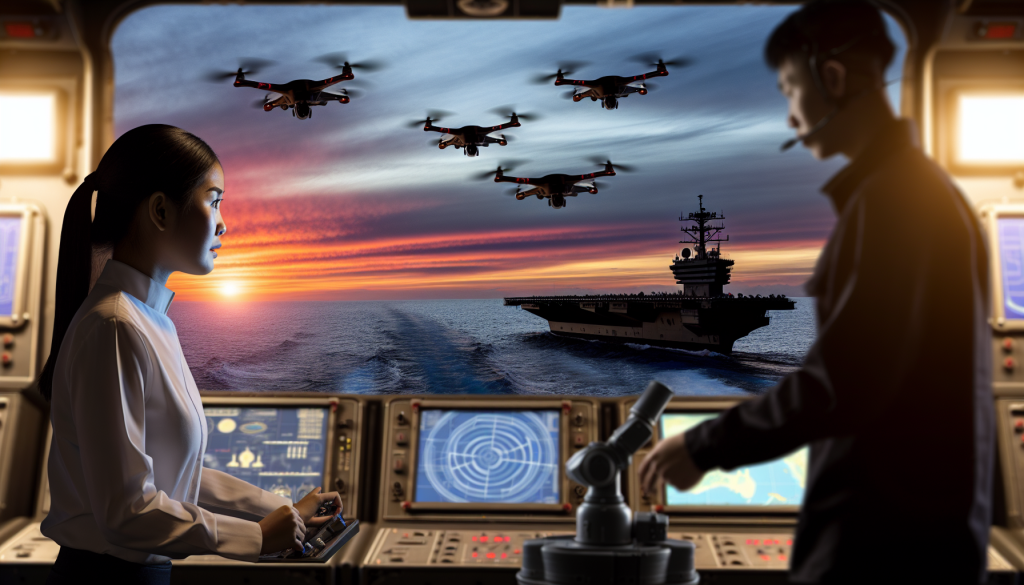The U.S. Navy’s Strategic Shift Towards Autonomous Systems
The U.S. Navy is entering a pivotal phase in its operations with a sweeping reorganization aimed at integrating robotic and autonomous systems into everyday fleet activities. Recently, Navy Secretary John Phelan announced the establishment of three dedicated offices to strengthen the management of the Navy’s burgeoning portfolio of drones and uncrewed platforms. This move, highlighted in a memorandum dated September 3 and reported by Breaking Defense, underscores a renewed institutional commitment to unmanned systems, aimed at streamlining development and acquisition processes.
A New Structure for Unmanned Systems
The memorandum sets forth the creation of the following key positions:
- Deputy Assistant Secretary of the Navy for Robotics and Autonomous Systems (RAS)
- Program Executive Office for RAS
- Portfolio Acquisition Executive for RAS
These new roles are designed to unify the oversight of unmanned initiatives that have historically been dispersed across various offices and commands. This reorganization acknowledges the need for a more coherent approach to unmanned systems, which play a critical role in modern naval strategy.
“To ensure the success of this effort, all [Department of the Navy] acquisition activities shall pause RAS-related acquisition decisions and contracting actions during the 30-day analysis, unless explicitly approved by the [acquisition executive],” the memo states.
Phelan aims to expedite the development of an implementation plan that clarifies responsibilities, reduces redundancies, and sets a foundation for swift growth in unmanned capabilities.
Pausing to Plan
The 30-day pause in contracting represents a significant step for the Navy, allowing the appointed team led by Vice Admiral Seiko Okano to reassess the current unmanned strategy without being constrained by active contracts. Okano, as the principal military deputy to the assistant secretary for research, development, and acquisition, will lead a focused review that engages stakeholders from both the Navy and the Marine Corps.
The team’s tasks include analyzing existing RAS programs, suggesting consolidations into a more manageable set of cohesive initiatives, and charting a transition timeline for the newly established offices. This period of reassessment is critical for laying the groundwork for a more unified strategy.
The Lessons of History
The Navy’s track record with unmanned systems has been mixed. In 2015, then-Secretary Ray Mabus initiated a similar restructuring, creating a deputy assistant secretary for unmanned systems to lead efforts like the development of the MQ-25A Stingray, a carrier-based tanker. However, those positions were eventually absorbed or disestablished, leading to a fragmented approach towards unmanned integration.
By 2018, the strategy shifted to “mainstreaming” unmanned initiatives within existing commands, a tactic that inadvertently slowed the progress of projects such as the Ghost Fleet Overlord and the Sea Hunter vessel, which were driven by Defense Department initiatives rather than Navy-led initiatives. The lack of dedicated oversight resulted in delays for significant programs, as unmanned systems often fell victim to budget cuts favoring manned platforms.
With the new organizational structure, the Navy is signaling its desire to correct course and instill a renewed focus on robotics and autonomous technology.
The Role of the Naval Rapid Capabilities Office
Okano’s leadership experience extends to the Naval Rapid Capabilities Office (NRCO), which was created in August to streamline innovation efforts within the Navy. Although Phelan’s memorandum does not explicitly mention the NRCO, its overlapping responsibilities ensure that it will play a vital role in implementing the RAS structure.
Positive Industry Reaction
Industry stakeholders have largely welcomed the restructuring, with groups such as the Association for Uncrewed Vehicle Systems International expressing optimism. The association’s president and CEO, Michael Robbins, stated, “The dedicated RAS team creates the required structure and urgency needed to restore Congressional confidence and finally turn innovation into deployable capability.” This acknowledgment of unmanned systems as strategic assets reflects a broader shift in how the Navy views its operational capabilities.
In tandem with the reorganization, Congress has allocated supplemental defense spending that includes substantial funding for medium unmanned surface vessels and other unmanned systems, creating a favorable environment for innovation.
Looking Ahead
Phelan’s initiative reveals a significant recognition within the Navy that unmanned systems are no longer merely experimental projects but essential capabilities that need integration into the fleet’s overarching strategy. Currently, unmanned aviation assets are managed under Naval Air Systems Command, while surface and subsurface systems fall under Naval Sea Systems Command. Potential consolidation into a unified RAS organization could drastically reshape the operational landscape.
As the Navy embarks on this crucial 30-day sprint, clarity regarding the functioning of these new offices will be vital. The evaluation will determine how swiftly and effectively the Navy can transition to a more cohesive and accountable structure focused on robotic and autonomous systems.
Through these efforts, the Navy positions itself to redefine its operational capabilities, ensuring that unmanned systems are fully embedded into the future of naval warfare.

